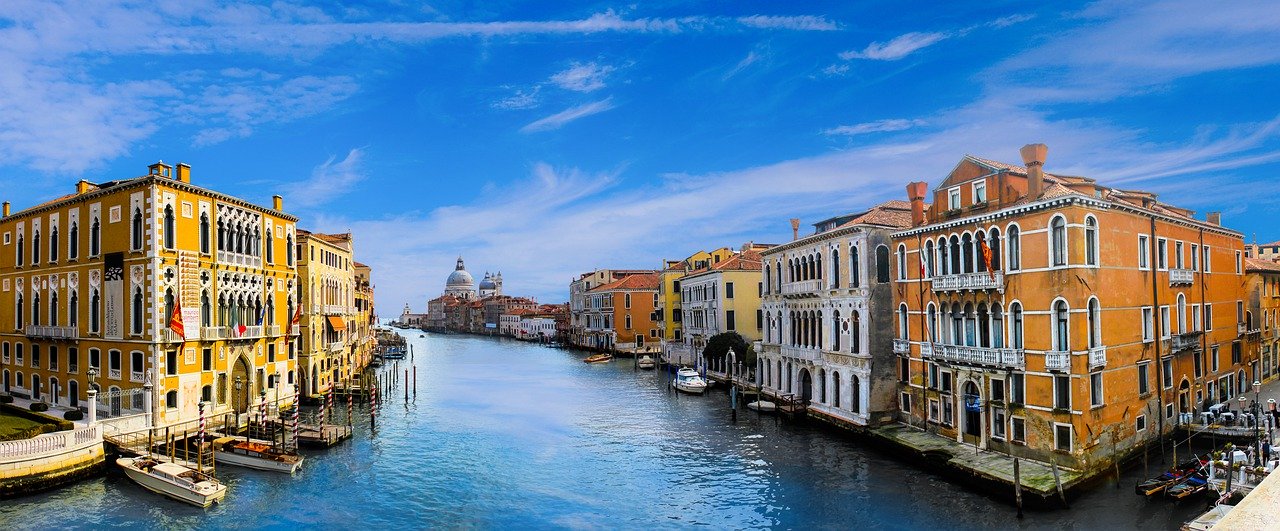“La Serenissima”, “La Dominante”, “The city of Water”, “The city of Masks”… Venice is a city with many names -and many faces. The city is built on a group of 118 islands and took its name from Veneti people, who inhabited the area around the 10th century BC.
Being the capital of the Venice Republic for almost 1000 years, Venice was a very important financial and trade power in the Mediterranean; it is considered to have been the first international financial centre worldwide.
St Mark’s Square (or Piazza San Marco) is the main square of the city. It is built in the east side of the church of San Marco; the constructions of the church have started on the early 9th century AD. A popular spot of the city is the Bridge of Sighs (Ponte dei Sospiri). The bridge, designed by Antonio Contino and made of white limestones, passes over the Rio di Palazzo. It connects the rooms of interrogation in the Doge’s Palace to the New Prison. The legend has it that the bridge was named “The Bridge of Sighs”, because it was the last sight that the convicts would see before their imprisonment.
An other sight, fine example of the Gothic architecture in the city, is the “Palazzo Ducale” the Doge’s Palace. The Palazzo Ducale was the residence of the Doge of Venice, the supreme authority of the Venetian Republic. Originally being built during the Middle Ages, the Doge’s Palace has been restructured and restored many times. Fires, structural failures and constant modifi cations due to political changes have contributed to the countless changes of the Palazzo Ducale. Since 1996, it is a part of the Venetian Museum’s Network.
cations due to political changes have contributed to the countless changes of the Palazzo Ducale. Since 1996, it is a part of the Venetian Museum’s Network.
Venice is home to many festivals, with the Carnival of Venice to be one of the most famous ones. It is believed that it originally started after the victory of Venice against the Patriarch of Aquileia in 1162, when people gathered in the San Marco square and danced to celebrate the city’s victory. During the Renaissance, the festival became official, until the Holy Roman Emperor Francis II outlawed the carnival in 1797. Since then, the Carnival re-appeared with small breaks, until 1979, when the Italian Government decided that the Carnival should revive, in order to bring the city’s history and culture back. One of the most important events is the contest of the Most Beautiful Mask. Masks have always been an important feature of the carnival. People from different occupations wore different masks. The maskmakers had many privileges and were important members of the society. The masks worn in Carnival are a true masterpiece; they can be constructed by leather or porcelain and they were worn between St Stephen’s Day on 26th of December until the midnight of Shrove Tuesday, when the Carnival officially ended.



